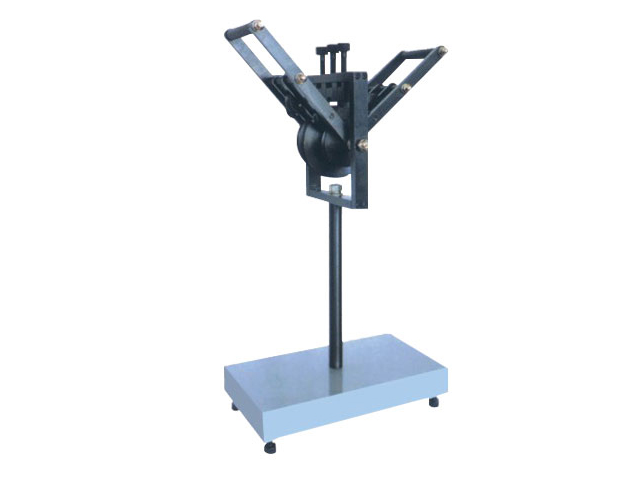
Plastic pipe bending testing machine
First, introduction
This testing machine is suitable for the bending test of insulating electrical bushing and other materials. The total bending Angle is 180°. After the test, observe whether the sample has cracks. It meets the requirements of GB/T14823.2 "Special requirements for pipes for electrical installation a rigid insulating material flat pipe", JG/T3050 "Insulation electrical pipes and accessories for construction" and ZBG33008 "Polyvinyl chloride plastic corrugated wire pipe" and so on.
The test machine can test the three kinds of catheters stipulated in the standard on one equipment, without changing the forming die and bending roll. And the operation is convenient, intuitive and reliable, so it is more and more widely used.
Second, technical parameters
The diameter of sample catheter is 16 20 25mm
Forming die bottom radius 48 60 75mm
Bend roll center track radius 84 105 131.25mm
Forming die and bend roll groove radius 8.1 10.1 12.6mm
The bottom diameter of the curved roll groove is 24 30 37.5mm
The total bending Angle of the specimen is 180°
Overall dimensions: length × width × height 350×320×850mm
Weight: 37kg
Third, structure description
The testing machine is composed of a base, a support, a forming die, a bending roll, a clamping device, etc.
Fourth, operation
4.1 Place the testing machine smoothly and wipe the surface clean.
4.2 Before the test, insert the bending aid into each sample. The bending aid can be a close-coil spring made of burrless steel wire with a diameter of 1-2mm (the outer diameter of the spring is 0.7-1mm smaller than the specified minimum inner diameter of the catheter). Or use the bending AIDS recommended by the manufacturer.
4.3 Lift the handles on both sides of the testing machine, select the corresponding forming die (wheel) according to the samples of different diameters, insert the sample between the forming die and the bending roll (wheel), turn the clamping handle, and gently clamp it in the slot of the forming die with the clamping device.
4.4 The handle on both sides of the sample is slowly pressed down, so that the total bending Angle of the sample is about 180°, and even when the roll is released, the sample is bent to 90° Angle, in the position of 90° Angle, should not damage the sample and bending auxiliary parts.
4.5 After the test, observe whether the sample is cracked.
4.6 If the sample is not easy to take out, you can pull out the positioning pin, rotate the clamping device at a certain Angle, and take out the sample.
4.7 After the test, wipe the testing machine clean and store it in a dry place.





 冀公網(wǎng)安備 13080502000095號
冀公網(wǎng)安備 13080502000095號




